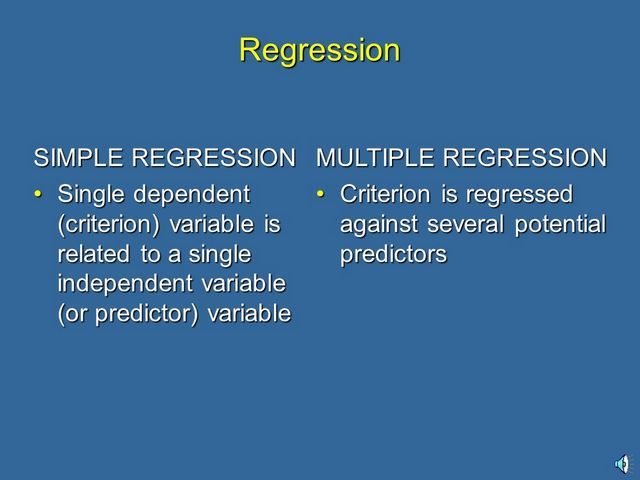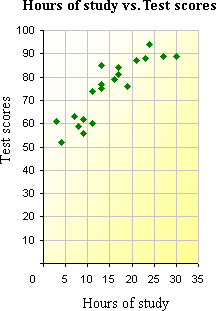

The qualified business income deduction (QBID) is also known as the Section 199A deduction because the rule comes from Section 199A of the Internal Revenue Code. The QBID is also known as the pass-through deduction, QBI deduction, and the 20% deduction. Using the simplified form to claim the pass-through deduction can save a lot of paperwork.
Take control of your taxes and get every credit and deduction you deserve. File with H&R Block Online Deluxe (if you have no expenses) or H&R Block Online Premium (if you have expenses). The IRS’s Qualified Business Income FAQs provide more details on the kinds of businesses that qualify as an SSTB. If you own multiple pass-through businesses, you can opt to aggregate your business interests, which, in some circumstances, may give you a larger QBI deduction.
How to Understand the Lines on Your Tax Return – TheStreet
How to Understand the Lines on Your Tax Return.
Posted: Tue, 01 Aug 2023 07:00:00 GMT [source]
Now that we’re all clear on who can claim the QBI deduction — or portions of it — let’s move on to how you go about it. There are also special circumstances with people who own multiple businesses. You can’t apply the 20% QBI write-off to money that’s been put into a tax-deductible retirement plan, like a 401(k) or SEP-IRA. You can use Keeper to scan your purchases and automatically deduct everything that’s an eligible business write-off in your industry. As you’ve probably noticed by now, the QBI deduction gets complex fast.
Who can claim the QBI deduction?
The Treasury Department and the IRS continue to consider whether new worksheets or forms are necessary to assist in the calculation. In certain situations it may make sense to pay extra wages to S corporation shareholders. When an S Corporation shareholder’s taxable income exceeds the threshold amount, and the Section 199A deduction is limited by 50% of the company’s W-2 wages, this could help. The amount of the extra Section 199A deduction will often outweigh the increase in payroll taxes in most situations. Essentially, the qualified business income deduction offers tax reprieve by providing an individual deduction of up to 20% of a business’s qualified business income.
The regulations also provide guidance on the determination of the section 199A deduction for taxpayers that hold interests in regulated investment companies, split-interest trusts, and charitable remainder trusts. This component of the section 199A deduction is not limited by W-2 wages or UBIA of qualified property. Many individuals, including owners of businesses operated through sole proprietorships, partnerships, S corporations, trusts and estates may be eligible for a qualified business income deduction, also called the section 199A deduction. As a reminder, the qualified business income deduction (QBI) gives small business owners an additional 20% tax deduction on their net business income, which helps reduce their total taxable income. If your small business meets all of the qualifications for the QBI deduction, you can take this deduction on your personal tax return. These losses are used, for purposes of section 199A, in order from the oldest to the most recent on a first-in, first-out (FIFO) basis.
What income is not included in the QBI deduction?
For joint filers, the same operations would apply using the $315,000 threshold, and a $100,000 phase-out range. The provisions of paragraph (d)(3)(v) of this section apply to taxable years beginning after August 24, 2020. Taxpayers may choose to apply the rules in paragraph (d) of this section for taxable years beginning on or before August 24, 2020, so long as the taxpayers consistently apply the rules in paragraph (d)(3)(v) of this section for each such year. The provisions of paragraph (d) of this section apply to taxable years beginning after August 24, 2020. Taxpayers may choose to apply the rules in paragraph (d) of this section for taxable years beginning on or before August 24, 2020, so long as the taxpayers consistently apply the rules in paragraph (d) of this section for each such year. The Treasury Department and the IRS project that more taxpayers will claim the section 199A deduction under these regulations, reducing government revenue relative to the no-action baseline.
However, as you’ll see, there are many limitations that may prevent you from taking a qualified business income deduction. Pass-through entities can be aggregated on an individual level to maximize the QBI deduction, but in some instances aggregation might not be beneficial. In addition to meeting the aggregation requirements, netting losses and income from the various businesses can get tricky.
How To Get the Qualified Business Income Deduction (QBI)
Because the QBI deduction is determined after you calculate adjusted gross income, there are some potential strategies you could consider if your income exceeds the applicable threshold. If you own more than one business, figure the QBI deduction for each, and then total up the results. Any strategies you consider should be given a good dose of caution, because there is still a lack of clarity and guidance into the definitions and how these deduction rules are to be applied. (B) The excess reported amount that is allocable to that reported section 199A dividend amount. Not everyone is eligible for the QBI deduction and not all income falls under qualified income, so this deduction can be more complicated than it seems.
- For example, you buy office furniture, which has a 7-year recovery period for depreciation.
- Our Block Advisors small business tax pros speak the tricky language of taxes.
- The qualified business income deduction (QBI) allows small business owners to take a 20% deduction based on the net income of their business, in addition to regular business deductions.
- Except as provided in paragraph (d)(2)(ii) of this section, a section 199A dividend is any dividend or part of such a dividend that a RIC pays to its shareholders and reports as a section 199A dividend in written statements furnished to its shareholders.
The Treasury Department and the IRS are also aware that taxpayers and practitioners have questioned how the phase-in rules apply when a taxpayer has a suspended or disallowed loss or deduction from a Specified Service Trade or Business (SSTB). If the individual’s taxable income is at or below the threshold amount in the year the loss or deduction is incurred, and such loss would otherwise be QBI, the entire disallowed loss or deduction is treated as QBI from a separate trade or business in the subsequent taxable year in which the loss is allowed. If the individual’s taxable income is within the phase-in range, then only the applicable percentage of the disallowed loss or deduction is taken into account in the subsequent taxable year. If the individual’s taxable income exceeds the phase-in range, none of the disallowed loss or deduction will be taken into account in the subsequent taxable year. These final regulations clarify this treatment and provide an example of a taxpayer with taxable income in the phase-in range and a suspended loss from an SSTB.
The term aggregate reported amount means the aggregate amount of dividends reported by the RIC under paragraph (d)(2)(i) of this section as section 199A dividends for the taxable year (including section 199A dividends paid after the close of the taxable year and described in section 855). Another way of gauging the potential economic benefits from these regulations is to consider them relative to the investment returns currently flowing to REIT investors through RICs. Though many RICs keep detailed records of their investment portfolios, these regulations nonetheless create non-trivial administrative costs for any RICs that wish to provide section 199A dividends to their shareholders. However, this increase in compliance costs may be accompanied by a decrease in compliance costs for REITs who would otherwise see an influx of individual investors holding direct interest in REITs.
How does the qualified business income deduction affect self-employment tax?
The Keeper app offers a built-in deduction tracker that scans your purchases and finds qualifying business expenses for you. When it comes to the QBI deduction, there are actually two income thresholds you have to deal with. On the other hand, maybe you have a more complicated situation — like earning high self-employment income or working in certain industries like law or medicine. In that case, there will be limits placed on the amount of QBI you can claim. This post strives to answer those questions — and to help self-employed people save as much money as possible on their taxes. Because, as with many IRS concepts, the QBI deduction can be hard to wrap your head around.
A specified service trade or business (SSTB) is any trade or business where the main asset is the skill or reputation of at least one employee or owner. When self-employed people put money into their 401(k)s, the amount they contribute can be deducted from their business income. But because taking that deduction lowers their business income, it also lowers the amount of their QBI write-off.
This document contains final regulations concerning the deduction for qualified business income (QBI) under section 199A of the Internal Revenue Code (Code). The regulations will affect certain individuals, partnerships, S corporations, trusts, and estates. The regulations provide guidance on the treatment of previously suspended losses included in qualified business income.

The QBI deduction only reduces the amount of federal income taxes owed by qualified business owners. It does not reduce Social Security or Medicare tax obligations (self-employment tax) or net investment income tax. If your business falls within the income thresholds listed above, the IRS has some tests to determine if you can still claim the qualified business income deduction. The deduction amount is calculated based on the wages paid to yourself and your employees and the value of property owned by your business.
If your business is above the income threshold for QBI, the deduction depends on the nature of your business and whether you are a specified service trade or business (SSTB). (iv) A receives a dividend from X of $35x on March 31, 2021, of which $5x is reported as a section 199A dividend. If A meets the holding period requirements in paragraph (d)(4)(ii) of this section with respect to the stock of X, A may treat the $2x section 199A dividend as a qualified REIT dividend for Qualified business income deduction A’s 2021 taxable year. The term post-December reported amount means the aggregate reported amount determined by taking into account only dividends paid after December 31 of the taxable year. On the basis of these effects, the Treasury Department and the IRS also project that these regulations will lead investors, on average, to hold more real estate in their portfolios (relative to the no-action baseline) and thus hold a smaller share of investment in other industries.
Most LLC owners and other qualified businesses use Schedule C to calculate their income and expenses, determining and reporting their adjusted gross income (AGI) on IRS Form 1040. If your total income is less than the applicable threshold amount, then you can likely claim the maximum deduction of 20% of your QBI. If you are a qualified business and have QBI, it does not matter whether you are engaged in a specified service trade or business as long as your total income is under the threshold amount for the tax year. If your business is a Specified Service Trade or Business (SSTB), there are further limits. An SSTB is defined as one performing services in the fields of health, law, accounting, actuarial science, performing arts, consulting, athletics, or another field in which the principal asset is the reputation or skill of its employees.

Form 8995-A is for more complicated situations, including SSTBs and owners of multiple businesses. If you have more questions about your business’s taxes, reach out to a Rocket Lawyer network attorney for affordable legal advice. If you need tax help, Rocket Lawyer now offers tax services with Rocket Tax™. This deduction is available to both taxpayers who itemize their deductions as well as those who use the standard deduction.
The Tax Cuts and Jobs Act provides businesses with a variety of changes in tax reporting starting with tax year 2018. One such change in the latest tax reform is the 20% deduction for pass-through entities’ qualified business income. If your business is not an SSTB, and your total taxable income is between $170,050 and $220,050 ($340,100 and $440,100 if married filing jointly), you can claim the full 20 percent deduction.








